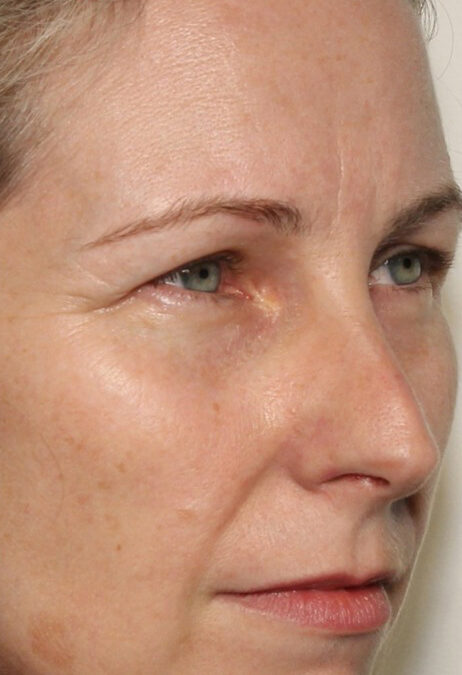
by wallacemcd | May 6, 2024 | Skin Peel
The Peel You are Having When You are Not Having a Peel
It is that time of the year again when our skin is letting us know the summer has been a little unkind. The telltale signs of hyperpigmentation are quite apparent on our skin. One of the most effective ways to deal with this discolouration, skin dryness and skin renewal is with the in-clinic treatment using a peel.
Peels are available in various strengths and cocktail formulations, and the one that is suitable for you will be dependent upon the skin condition being treated.
A peel is a skin rejuvenation technique involving the application of either enzymes, chemicals, herbs, or a cocktail of all of the above.
The idea behind a peel is to remove the damaged outer layers of dry, discoloured and coarse skin from the skin’s surface. When the peel is performed, the regenerative process of the skin is stimulated. The result revealed a marked improvement in skin conditions such as fine lines and wrinkles, texture and tone of the skin, lightening and brightening the skin, increased blood circulation, softening scar tissue, strengthening the integrity of the skin, stimulating fibroblast cells resulting in new cell formation, hydration, reduction of pore size, clearing of blemishes, more balanced oil production and an overall healthier appearance of the skin.
There are 4 main types of peel intensity when carried out in the clinical treatment room.
- 1. Progressive- this peel does not usually cause visible exfoliation. There may be superficial dryness for a few days post-procedure and then the skin will look refreshed and radiant and can be carried out as a standalone treatment or it can be used in conjunction with treatments such as microdermabrasion. This mild peel can be carried out every 1-2 weeks for 3-6 treatments.
- 2. Mid-depth – exfoliation with this peel usually occurs within 3- 5 days post-procedure. This level of peel will usually turn brown before a gentle flake occurs. This rejuvenation technique may be performed monthly.
- 3. Deep – the skin undergoes considerable peeling, almost like a snake shedding its skin. Two of the better-known deep peels are Cosmelan and the Deep Herbal Peel. The entire process can take 7-10 days and is usually repeated 3 times a year depending on what skin condition is being treated.
- 4. Biochemical Peel –The peel you are having when you are not having a peel. This is the new kid on the block from Spain. With this avant-garde technique, there is no downtime, no pain, no heat and no peeling.
The Biochemical peel incorporates active ingredients in its formulas with an effectiveness that has been proven by dermatological science. Using a cocktail of acid ingredients such as salicylic, lactic, malic, pyruvic, azelaic, mandelic, phytic, ferulic, hyaluronic, pure glycolic, citric, kojic and tranexamic, the outcome is nothing short of miraculous. These ingredients are not new in the peeling arena, the difference being the percentage, pH and layering technique.
Factors required to be reviewed prior to having a peel include
- 1. Home care and the skin preparation undertaken at least 2 weeks prior to treatment
- 2. Skin reactivity, thickness and oiliness
- 3. The time of the year and the intensity of the sun
- 4. Your general health including autoimmune disorders
- 5. The Fitzpatrick skin type – a guideline devised to determine how the skin might respond to a peel
- 6. The Glogau classification is also known as the wrinkle scale of photoaging. This will assist in determining the severity of sun damage in the form of discolouration and wrinkles.
Peels stimulate the formation of new healthier cells providing a revival to the complexion. No Matter your skin concern, the fact there are numerous peels and techniques you can be assured there is one that is just right for the result you want to achieve. Peel, and lift the veil your skin has been hiding under.
What is photoaging?
Photoaging refers to the premature aging of the skin caused by repeated exposure to ultraviolet (UV) radiation, primarily from the sun but also from artificial sources like tanning beds. Unlike natural aging, which is a biological process that occurs over time, photoaging is characterised by specific changes to the skin induced by external factors.
Key signs of photoaging include:
- Wrinkles and fine lines: UV rays can break down the collagen and elastin fibers in the skin, which are crucial for maintaining the skin’s firmness and elasticity. This breakdown leads to the development of wrinkles and sagging.
- Changes in pigmentation: Sun exposure can cause an increase in melanin production, leading to age spots, freckles, and uneven skin tone.
- Rough texture: Over time, sun exposure can cause the outer layer of the skin to become thicker and rougher, which might feel dry or leathery.
- Loss of elasticity: With the breakdown of elastin fibers, the skin loses its ability to snap back after stretching, leading to a looser appearance.
Preventive measures against photoaging include using broad-spectrum sunscreen, wearing protective clothing, and avoiding peak sun hours. Treatments to manage the effects of photoaging range from topical retinoids and antioxidants to more invasive procedures like laser therapy and chemical peels.
by wallacemcd | Apr 2, 2024 | Uncategorized
Brown Skin Spots and the Sun
We all desire a clear and consistent skin tone. However, lingering hyperpigmentation is a constant barrier to achieving this. It impacts every skin type at every stage of our lives, especially when sun exposure, heat and prolonged UV damage are factors. The pleasing news is that with the proper homecare regime and in-clinic treatments, the brown spots can be reduced or removed completely. This will be a consistent programme including prevention and treatment.
Hyperpigmentation refers to areas of the skin with an abnormal appearance of pigment, resulting in darker areas of the skin compared to the rest of the complexion. There are 3 main types of hyperpigmentation: epidermal (surface is light brown and not quite as dense), dermal (skin is ashen-gray and a deep brown and appears more solid), and then a mixture (both of the above levels and is usually dark brown).
There are many triggers creating pigmentation (dyschromias) changes, as well as varying depths of damage to the skin. These types of changes in the skin may occur when melanocytes (colour-producing cells) are either over-stimulated resulting in hyperpigmentation, or they may be destroyed, resulting in hypopigmentation. The colour changes may also be an uneven pigmentation from procedures, picking or scratching. Melasma is denoted by more dense larger patches and is normally created with hormonal imbalance with estrogen and progesterone. Other causes may include birth control pills, HRT, PIH (post-inflammatory hyperpigmentation), long-term sun exposure, razor bumps, heat, humidity, severe sunburn, eczema, chemical irritations, rashes, abrasive scrubs, medications, chicken pox, insect bites, surgical procedures, thyroid and adrenal disorders.
One thing to keep in mind with most types of hyperpigmentation is our melanocytes are there for a reason, which is to protect the cell initially. We need this in order to help fight against the impact of the UV rays. After this protection process has taken place, the skin is now left with underlying damage which is seen in the form of pigmentation.
The 2 main factors stimulating hyperpigmentation are UV exposure and heat. Wearing an SPF of 30+ each day will assist with this protection. The best sunscreens for hyperpigmentation are typically all-mineral formulas. Chemical SPFs neutralize the UVA and UVB rays, while the mineral SPFs, create a barrier on top of the skin, blocking these factors and protecting it from infrared damage. A huge reminder, even when you wear your hat, sun protection and sunglasses and your face is covered, tanning on other parts of your body can still stimulate the melanocytes.
Hydroquinone is a well-known ingredient to treat hyperpigmentation. It is banned in many countries as it has been linked to possibly being carcinogenic. Our skin is very smart and may develop a resistance, or immunity to it, resulting in a very dark hyperpigmentation, which usually takes longer to reduce.
Other proven ingredients for use in both homecare and clinical treatments include the enzyme papain (from the papaya), and bakuchiol (a retinol alternative supporting the skin’s cellular renewal. When applied topically it encourages sloughing of overly pigmented cells, leaving skin looking renewed and more even), mandelic acid (a water-soluble exfoliating alpha hydroxy acid made from bitter almonds and is generally tolerated well by most skin types with its larger molecular size and therefore slowing the absorption resulting in less irritation to the skin), tranexamic acid (will even out hyperpigmentation when melanin density is connected to sun damage. It is also safe to use through pregnancy), pyruvic acid ( derived from the hibiscus and is both oil and water soluble and has the capacity to brighten the faster by encouraging the rapid cell regeneration), and niacinamide (a vitamin B3 product impedes the production of melanin as it is happening).
Some of the in-clinic treatments available include IPL, Fractional laser, Tixel, Q Switch Yag and herbal and chemical peels.
Protect the skin you are in, it is yours for a lifetime. Regardless of hyperpigmentation’s cause and its associated uneven tone and dark spots, it is essential in Australia to treat and prevent it on a regular basis. It is not a seasonal call to action, but instead a year-round commitment.

